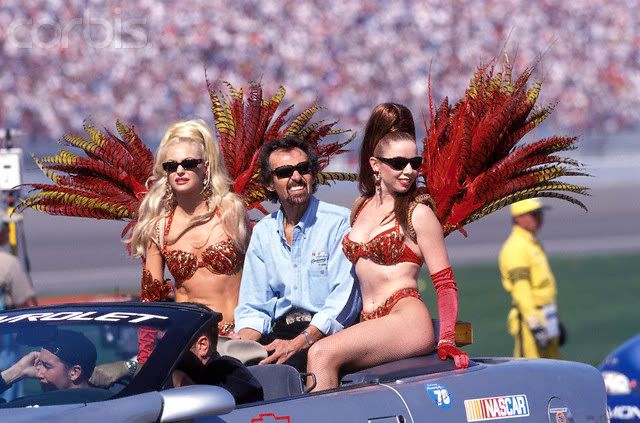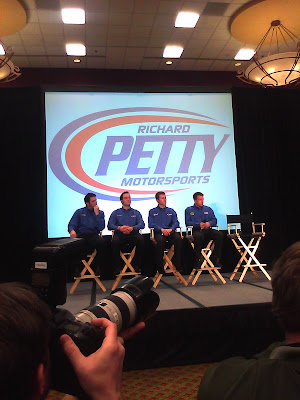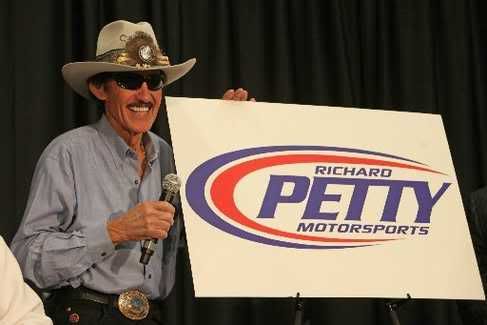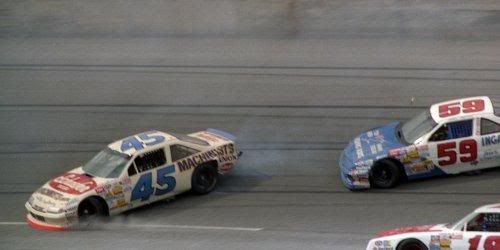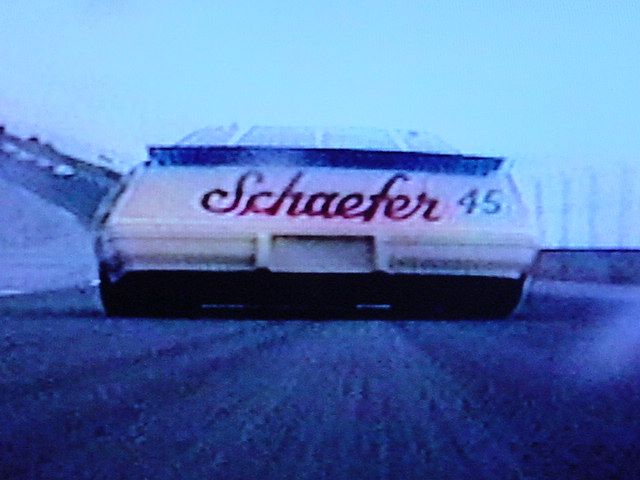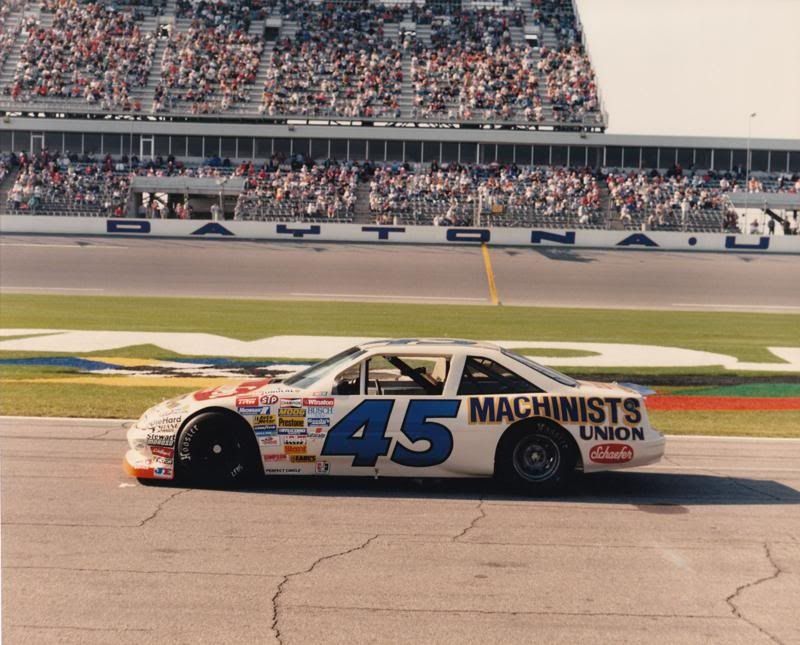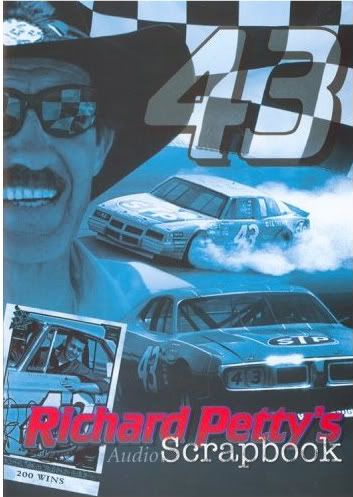In terms of reading, I'm starting off 2010 better than I ended 2009. Reading used to be a positive habit for me a few years ago, but I've slacked off the last 2 or 3 years. With a renewed interest beginning this year, I started with appropriately enough a couple of racing-related books.
The first one I read was
Ray Fox: Sly in the Stock Car Forest by long-time motorsports writer Godwin Kelly.

Even though I consider myself an "old school" fan, my knowledge of NASCAR is really from about the mid 1970s forward. What I know about racing in the 1960s and before is pretty limited to the Pettys. I knew about Ray Fox, but I didn't know much about his contributions.
Mr. Fox is still alive, lives in Florida in his 90s, and assisted Kelly with the book. Fox built cars, crewed them, and owned them. Though he never won a championship as an owner or crew chief, he did oversee some great wins. The book covers some great wins by drivers piloting his cars such as:
- Junior Johnson in the 1960 Daytona 500
- David Pearson in the 1961 World 600
- Buck Baker in the 1964 Southern 500
- Buddy Baker in the 1967 National 400 (his first career win)
After his tenure as a competitor, NASCAR hired him many years later as an inspector. Fox pulled some pretty crafty mechanical tricks on his cars though he denies he ever "cheated". Like NASCAR did with Gary Nelson and Robin Pemberton who tricked NASCAR inspectors on more than one occasion themselves, I guess the France family decided "if ya can't beat 'em, join 'em" and hired Fox as one of their own.
One of the things I found most interesting was how drivers jumped around from ride to ride within a season. Multi-year, driver-owner contracts really didn't exist back then. Also, certain year-end accolades didn't mean jack squat when a new season rolled around. David Pearson was rookie of the year in 1960, but he didn't have a steady ride in 1961. He pulled together a car owned by himself to soldier on, but he had his greatest success that year in a limited schedule for Fox.
Here's Ray Fox with then ARCA rookie Joey Logano a couple of years ago...

As fun as it was to read about Fox's contributions, his wars with NASCAR, his friendship AND rivalry with Smokey Yunick, it was equally difficult and frustrating to read such a poorly written book. Kelly frequently repeated himself between chapters and sometimes even within chapters.
Also, the book didn't seem to have a solid flow to it. The book didn't have to flow chronologically - though the book did make a reasonable attempt to do so. And it wasn't as if Kelly was just compiling random stories either. The stories were relevant and interesting, but the structure of it wasn't the best. I'm guessing Kelly wrote and then edited his own book.
The second book I read was Dr. Steven Olvey's
Rapid Response: My Inside Story as a Motor Racing Life-Saver. While I've been a life-long fan of NASCAR racing, I've always had at least a minor interest in other forms of racing including the open-wheelers of Indy racing. Olvey was the long-time Director of Medical Affairs for USAC when it still sanctioned Indy cars. He later took a similar position at CART when a group of owners broke away from USAC to start the rival, yet ill-fated, competing sanctioning body.

Many folks - drivers and writers - have said that in the 1960s and before, drivers knew wrecks that looked bad were likely even worse than they looked. The mortality rate amongst Indy racers in that post-war through 1960s was unacceptably high.
Olvey's book flows naturally and quickly from the late 1960s through the bankruptcy of CART in the mid 2000s. He covers some of the most incredible crashes, injuries, and unfortunately deaths in open wheel cars - Emerson Fittipaldi, Rick Mears, A.J. Foyt, Alex Zanardi, Nigel Mansell, Greg Moore just to name a few.
He also describes the monumental safety advances made over that span of time - better seats, placement of gear shifts, height of the carbon fiber tubs, HANS device, a dedicated, adoption of on-site medical/trauma care (something NASCAR
still doesn't have), advanced treatment of orthopedic injuries, concussion and other brain injury research, etc.
When covering the injuries or describing a scene where a driver has perished, he does so with clinicial objectivity, respect, and without morbid sensationalism. Some degree of detail is needed to describe the scenes to the reader, but he does so without getting overly gruesome. (Video clips of many of the accidents described in the book are also on YouTube - if you can handle them.)
Not knowing much about Indy cars, I don't really know many ticky-tack inaccuracies the book may have. Two little ones I noticed should be mentioned but really don't detract from the overall book.
- One, he refers to CART's cancellation of its race at Texas World Speedway. - TWS is in College Station, TX. Texas MOTOR Speedway is in Ft. Worth.
- Two, he says Dale Earnhardt was trying to keep Jimmy Spencer and Sterling Marlin away from his race-leading teammate, Michael Waltrip as the laps wound down in the 2001 Daytona 500. - Spence was in the race but waaaay back. Not sure who Olvey was referring to. Mikey was employed by DEI, but he was not Earnhardt's teammate. And I'm not sure where Dale Jr. was as Olvey wrote his memories of that day. I'll cut him some slack because he admitted in his role with Indy racing, he had very limited knowledge about NASCAR. Yet an editor should have caught these obvious flaws.
I recommend both of the books be read. If you want to learn more about the early days of NASCAR, the Fox book should be considered - but be forewarned you won't be reading any Pulitzer-prize winning prose. For pure education and a quick read about motorsports in general, the Olvey book is great. If its a coin toss for you as which one to get first, go for Olvey's book.
TMC
 I'm not much of a gambler (at least not at the tables), and I've been to Vegas enough times to scratch my itch. But I'm always up for a race weekend at a track I've never attended. Until this trip, the track farthest west where I've attended a race was Texas Motor Speedway where I watched the inaugural Busch and Cup races in 1997. I've driven by California Speedway and Sears Point - but not to a live event. So getting to cross Vegas off my list of tracks to see will be great.
I'm not much of a gambler (at least not at the tables), and I've been to Vegas enough times to scratch my itch. But I'm always up for a race weekend at a track I've never attended. Until this trip, the track farthest west where I've attended a race was Texas Motor Speedway where I watched the inaugural Busch and Cup races in 1997. I've driven by California Speedway and Sears Point - but not to a live event. So getting to cross Vegas off my list of tracks to see will be great.

 For those wondering about the additional key detail of the trip - yes I've done my advance scouting for Schaefer. My initial plan of action involved packing a couple of ceremonial cans in my luggage as I did when I last traveled to San Diego.
For those wondering about the additional key detail of the trip - yes I've done my advance scouting for Schaefer. My initial plan of action involved packing a couple of ceremonial cans in my luggage as I did when I last traveled to San Diego.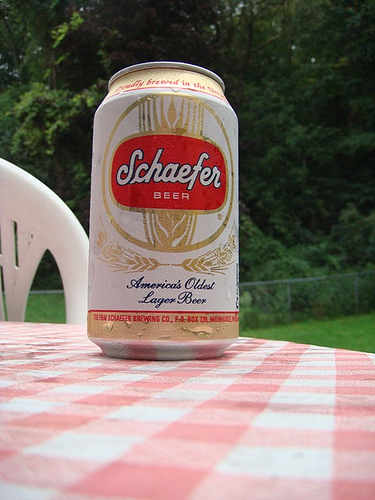 Instead, SUCCESS! Schaefer is still distributed in Vegas, and Lee's Discount Liquors about 5 miles south of the strip sells it. So guess where our first stop will be upon arrival at McCarran Airport Friday afternoon?
Instead, SUCCESS! Schaefer is still distributed in Vegas, and Lee's Discount Liquors about 5 miles south of the strip sells it. So guess where our first stop will be upon arrival at McCarran Airport Friday afternoon? While I'm excited about going to this track for the first time, the place already has one strike against it. Unlike most tracks in the south, mid-Atlantic, and even New Hampshire, coolers are prohibited inside the Vegas track. [cynicism] I'm sure we'll have the good fortune to see the track sell cold ones at a reasonable price. [/cynicism]
While I'm excited about going to this track for the first time, the place already has one strike against it. Unlike most tracks in the south, mid-Atlantic, and even New Hampshire, coolers are prohibited inside the Vegas track. [cynicism] I'm sure we'll have the good fortune to see the track sell cold ones at a reasonable price. [/cynicism]